Commercial real estate news releases from Avison Young Canada
Quarterly and topical research insights to help your business gain competitive edge in commercial real estate.
Espace Montréal: Montréal East: the new darling of commercial real estate in Greater Montréal
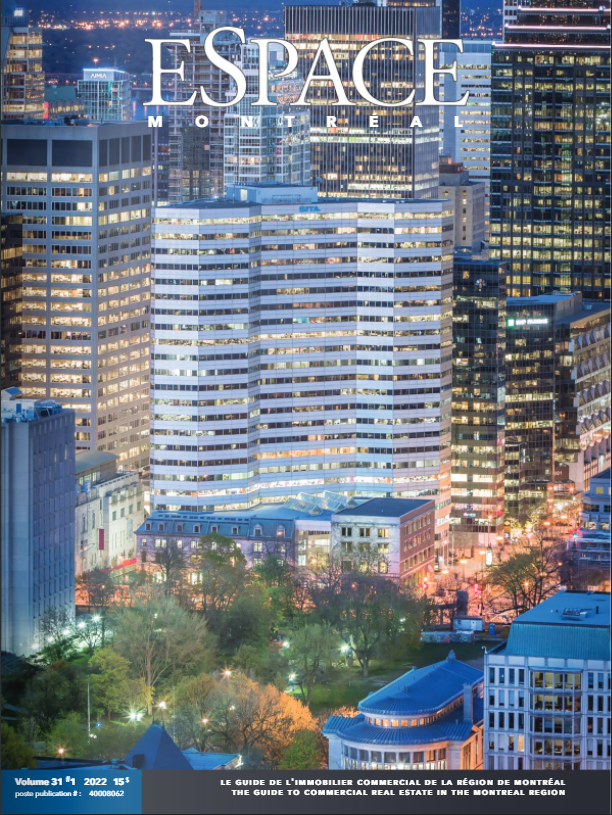
Jean Laurin, President and Managing Director, Avison Young Québec
Bolstered by the anticipated REM de l’Est, a number of mobilization projects and dynamic local organizations intent on participating in the improvement of the living environment, Montréal’s eastern territory is looking like the most promising in commercial real estate in the next 10 years.
Why the east end? The City of Montréal and the various levels of government have already demonstrated their intentions to develop the urban area that includes 11 boroughs extending from the Jacques Cartier Bridge to the eastern-most extremity of the island.
Four years ago, The Advisory Committee on the Economic Development of the Territory of Montréal also made this extensive sector a priority in its recommendations. The rationale is clear: the eastern sector of the island is the only zone in the metropolitan area that has both a major strategic advantage – the Port of Montréal – as well as immediate access to the highway and rail networks.
The impact of the REM de l’Est
The strong support of our political and economic actors is now taking shape with the deployment of the REM de l’Est. Led by the Caisse de dépôt et placement du Québec, the project is estimated at more than $10 billion and represents the largest mass transit project in the history of Québec.
Investment in public transportation has always driven economic development in the sectors and the regions where it has been mobilized. While numerous discussions are taking place on how the network will be incorporated into the urban landscape of the eastern part of the island, this new network will include some 32 kilometres of transportation corridors between the Marie-Victorin/Pointe-aux-Trembles trunk line and 23 stations that serve the territory.
In addition to doubling the extent of the current metro system in Montréal East, the new network will be able to serve some 133 thousand people a day, which is significant. In fact, it will contribute significantly to improving the connectivity between the various business hubs, employment, health, education and recreation in this promising sector. The REM de l’Est alone will bring access to more than 27 million square feet of vacant land in the zone.
Three real estate projects that will drive growth
The REM de l’Est rail network will include the Ville-Marie borough very close to the Jacques Cartier Bridge, where three mixed-use real estate projects are expected to revitalize significantly this industrial zone. The three megaprojects together represent more than 3.5 million square feet of office and retail space in the area. From a residential perspective, it will mean the construction of more than 10 thousand new homes and condos over the next 10 years. This new construction could easily double the population of the Ville Marie district, which included 23,555 residents in the 2016 census.
The Quartier des Lumières on the site of the former CBC building is one of the three new real estate projects that will re-animate the sector. The crown corporation could easily have left the area to relocate elsewhere in Montréal. But by continuing to operate on the same site in more modern facilities tailored to the organization’s new needs, the CBC/Radio-Canada initiative to stay indicates its desire to participate in the development of Montréal East.
Under the leadership of Groupe Mach who acquired the land of the crown corporation in 2016, the new neighbourhood is to include four million square feet of residential, retail and office space, with nearly half of the built area occupied by retail and office space. Developed by Devimco, the construction of the Auguste & Louis condo towers, representing nearly two thousand units, has already begun. Parks, community housing and the construction of a new school are also in the plans for the Quartier des Lumières.
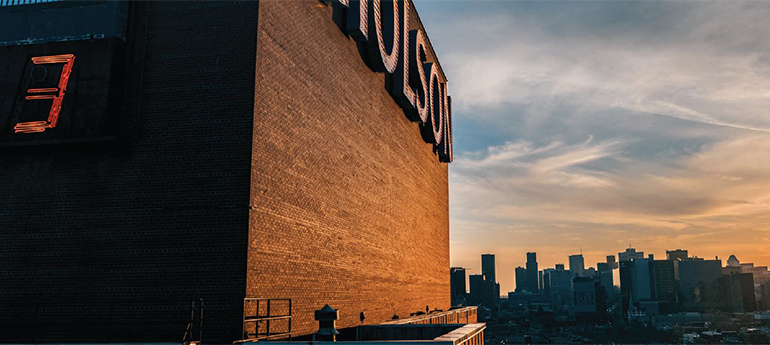
Molson heritage site
The redevelopment of the Molson brewery site, bordering the St. Lawrence River, is also part of the equation to bring new life to the sector. Bought for $125 million by a consortium including Groupe Sélection, Montoni and Fonds de solidarité FTQ, this six-million-square-foot site will eventually become a residential area of four to five thousand units. The plans are currently being analysed by the City. The mixed-use development, which will include the Molson head office, will also include more than 1.2 million square feet of office and retail space. Construction began in a first phase in March and should be completed in 2024.
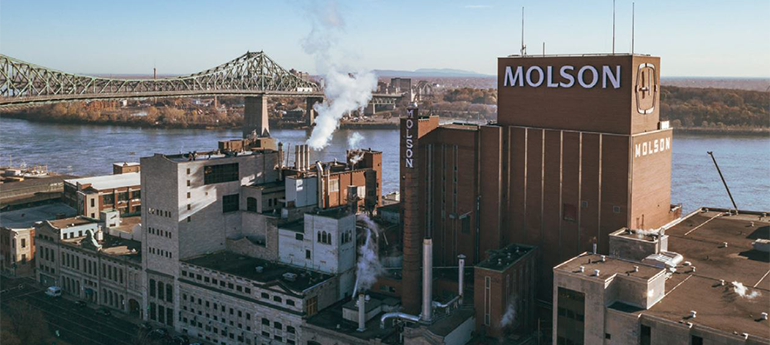
Action at the foot of the bridge
Prével’s Esplanade Cartier is the third mixed-use real estate project to breathe new life into a sector that hasn’t seen as much action since the construction of the CBC tower in the early seventies. That a real estate developer, with a reputation for its sensitivity and respect for the communities it serves, is investing in the east end of the city is a strong indication of the real estate potential of the area in the coming years.
The large site, which is taking shape at the foot of the Jacques Cartier Bridge, will include nearly two thousand housing units in six clusters, two parks, a pedestrian area and the new YMCA, which is scheduled for the third phase of development. The project, which intends to give occupants access to the St. Lawrence River shoreline, also includes for Groupe TGTA to construct three office buildings. Fronting on De Lorimier Street, these buildings will provide more than 600,000 square feet of space. Construction of the first 70,000-square-foot building began in summer 2021.
Much like the Société de développement Angus did by creating Technopole Angus (the first eco-district in Québec) 25 years ago, these three important projects will provide the leverage for other real estate developers to consider the sector as an attractive option. To that point, there are several other lots in the vicinity of the Jacques Cartier Bridge that provide value-added potential.
Modernization of the Maisonneuve-Rosemont Hospital
The Maisonneuve-Rosemont Hospital also constitutes an important driver in the future development of Montréal East. Last August, the Québec government authorized the modernization of the hospital. Evaluated at nearly $2.5 billion, the project will be rolled out over 10 years and will likely see the reconstruction of some existing parts of the hospital as well as its enlargement. Once completed, the establishment will include some 720 beds.
It should be noted that management of the hospital deciding to stay in the current location was influenced by the arrival of the future REM de L’Est (Hôpital Rosemont) which will be located in the same area. This new access to public transport will facilitate travel for hospital patients, 80 percent of whom live in the east end. It will also be very convenient for some five thousand employees and three thousand students a year who travel there since the hospital is affiliated with the Université de Montréal’s faculties of medicine, dentistry, nursing and pharmacy.
The modernization of the hospital has been the subject of significant rumours that the Legault government will announce a future healthcare innovation zone in Montréal East. With a health care hub will also come investment in services, research and development, as well as in university infrastructure. The file is one to follow for these reasons but also because the hospital is a province-wide hub for highly specialized ophthalmology, kidney and bone marrow transplantation. As well, the hospital houses one of the largest centres for cell therapy and regenerative medicine in the world.
Huge amount of land ripe for development
Among the other factors that illustrate the extent to which the east end of Montréal is about to move forward in leaps and bounds includes the availability of land. The Chambre de commerce de l’Est de Montréal estimates there is more than 82 million square feet of vacant industrial land - land that, according to them, costs an average nine percent less a square foot than the equivalent in the western zone of the island.
Because the availability of large lots of industrial space has become a challenge in the Montréal territory, a significant number of organizations have already turned to the east where there are not less than 15 industrial parks.
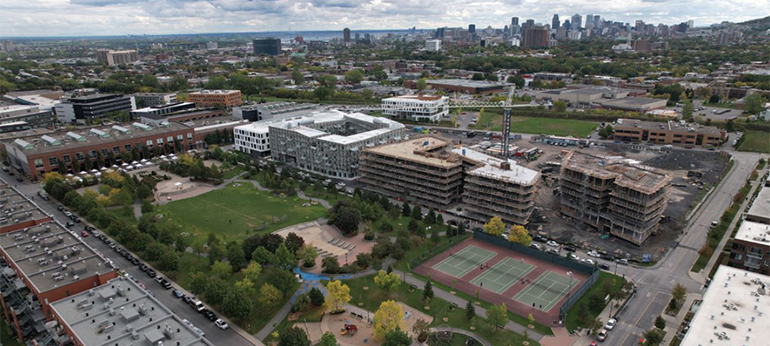
The East goes green
The significant decontamination initiatives on industrial sites over the last two decades is indicative of the various players’ intention to restore Montréal to its original noble status. Twenty percent of Montréal East’s landmass is estimated to be lightly or heavily contaminated.
Not surprisingly, the area is home to some larger players in Quebec’s decontamination industry, most notably Sanexen and Englobe. One of them, Groupe C. Laganière, purchased the Shell lands for $22 million in 2017. The company has sold a quarter of the land to Broccolini for $56.5 million who intend to build an Amazon warehouse.
Montréal East is also a laboratory for phytoremediation, a technology that uses plants to decontaminate soil, water and air in order to preserve the groundwater and the food chain. Between 2016 and 2019, a large project conducted by Institut de recherche en biologie végétale (IRBV) of the Université de Montréal enabled the rehabilitation of the former Suncor site in the Rivière-des-Prairies–Pointe-aux-Trembles borough.
Bold and audacious: Frédéric-Back Park
The genesis of Frédéric-Back Park, one of the most ambitious rehabilitation projects ever seen in a North-American urban setting, is yet another example arising out of soil decontamination. Since 1995, the site of a former limestone quarry later used for the landfill of residual waste has begun to be transformed. When complete, the park will constitute more than 80 percent of the approximately 20 million square feet of the Complexe environnemental de Saint-Michel. Approximately the size of Mount Royal Park, this new recreation area in the eastern part of the city will become one of the largest green spaces in Montréal.
It’s interesting to note that the park is equipped with biogas collectors camouflaged by decorative spheres that deliver energy to the Biomont cogeneration plant. Because of this recuperation of biogas, the plant can supply enough electricity to supply power to the equivalent of 19 hundred homes in the area.
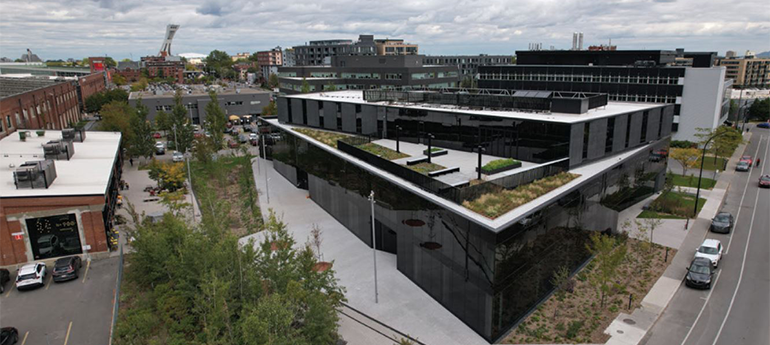
Synergy shines in the east and beyond
All these clean technologies (new generation bio-fuels, water treatment, soil rehabilitation, green chemistry) are allowing Montréal East to build an industrial asset and network that in turn allows the players to reconcile economic growth with environmental stewardship. This network currently includes nearly 50 businesses and organizations that add value to the area and even beyond.
Synergie Montréal, propelled by PME MTL Est-de-l'Île, is proof. This ecological industrial initiative where the output of one is the input of others has become the largest circular economy project in the greater Montréal area. According to the organization, more than a thousand organizations have been reached and more than 500 have been accompanied. In total their actions have been responsible for a reduction in greenhouse gases of more than 28 hundred tonnes.
In conclusion, all these initiatives and many others in the territory make for a telling story. Montréal East is on the cusp of one of – if not the – most successful eras in its commercial real estate history. To participate in this phenomenon as an early adopter is both a responsibility and a privilege. Bravo!
Click here to consult the electronic version of the magazine
